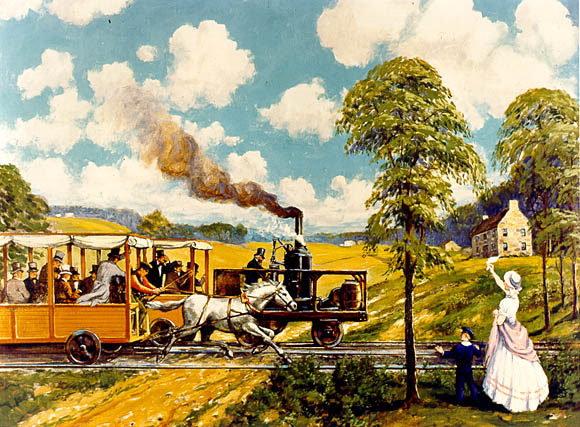The Paintings of Carl Rakeman
1830 - The Iron Horse Wins

The race on August 28, 1830, between Peter Cooper's diminutive Tom Thumb locomotive and the horse-drawn Baltimore and Ohio (B&O) Railroad car demonstrated the superiority of steam power. Though the gallant horse won eventually when mechanical failure stopped the locomotive, the Tom Thumb had led the race, rounding curves at 15 miles an hour.
The B&O, America's first common carrier railroad, was organized when Baltimore began to lose business to New York's Erie Canal. Because steam locomotives were experimental, the B&O intended to use horses. But failure to make expenses, and the lack of success of wind-driven sailing cars and horse-powered treadmill cars, opened the way for Peter Cooper's plan for steam power.
All horses on the B&O Railroad were replaced by steam locomotives on July 31, 1831.
